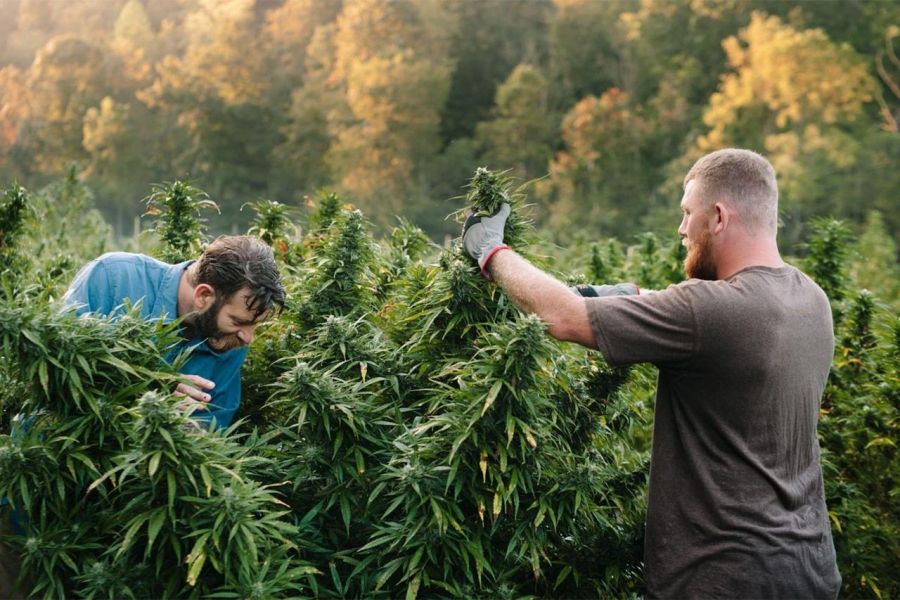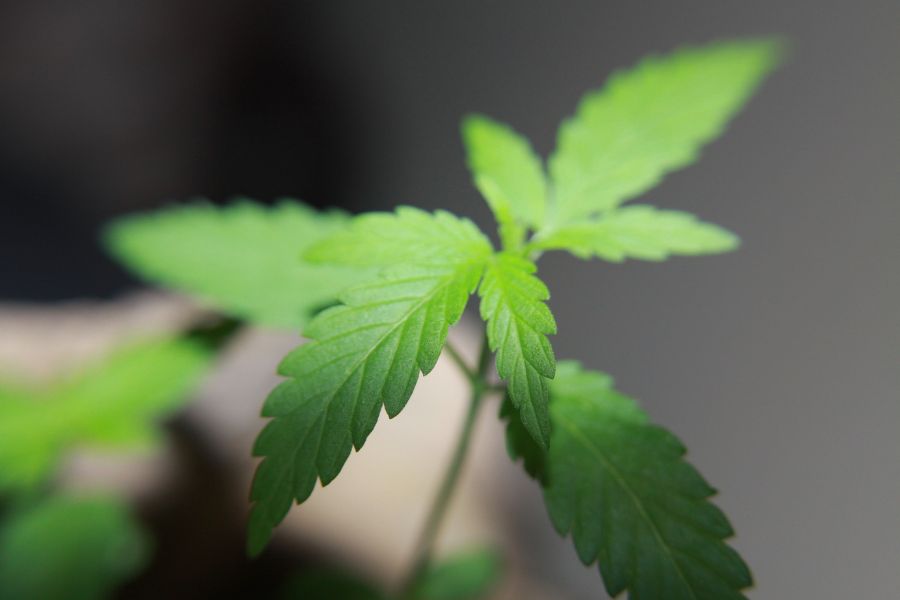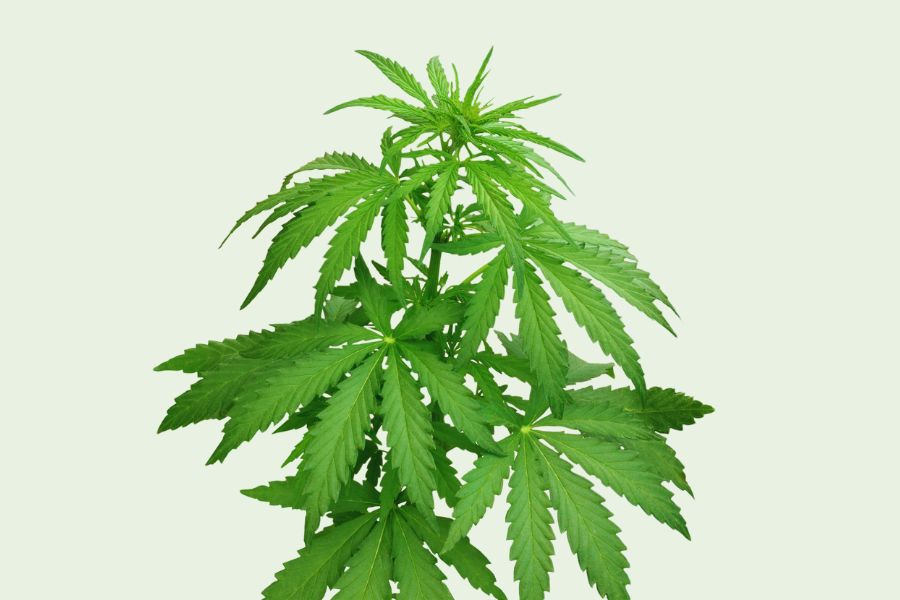Becoming a new cannabis farmer can be an exciting and fulfilling journey. However, it also comes with its fair share of challenges.
From navigating the constantly changing legal landscape to dealing with pests and diseases, there’s no shortage of obstacles to overcome.
But don’t worry – with some knowledge, preparation, and a bit of patience, you can successfully navigate these challenges and thrive as a cannabis farmer.
In this guide, we’ll go over some of the most common challenges you can face as a new cannabis farmer and provide you with some tips and strategies to overcome them.

Table of Contents
What Can a Novice Grower Encounter?
With the decriminalization, legalization, and acceptance of marijuana growing, more and more people want to grow weed and sell it. The worldwide market for cannabis was worth $28.266 billion in 2021. By 2028, it’s predicted to be worth $197.74 billion – that’s a growth rate of 32.04% over seven years! Thus, cannabis’ acceptance for recreational, medicinal, cosmetic, and pharmaceutical uses contributes to the industry’s growth.
Marijuana’s growing popularity will create more market growth opportunities soon. There’s much to know about whether you want to grow weed for commercial or personal use. From the legal guidelines, seed quality, and cannabis strains to optimal growing conditions, getting informed before investing in farming is essential. Here are a few things to keep in mind when you start farming.
Is It Legal to Grow Marijuana?
There are a few factors to consider, including your location and farming circumstances. Legally, marijuana growing is in disarray, so if you want to start growing it as a business, you’ll need legal guidance.
To be clear, we use the term ‘marijuana’ to refer to the ganja plants that are specifically grown for their high THC content. At the same time, ‘hemp’ (or “industrial hemp”) is the weed variety with low THC levels (below 0.3%), which is the legally acceptable limit. Cannabis is used to describe the whole plant category. Obviously, these terms are not legal terms, but we’ve separated them for clarity here.
The Controlled Substances Act places marijuana on its list of prohibited substances, making it illegal to grow, possess, sell, or use this herb. This means that marijuana is still illegal at the federal level. The Drug Enforcement Administration (DEA) is technically authorized by law to detain those who cultivate or use marijuana, and the DEA, along with local law enforcement, has recently demolished illegal marijuana-growing enterprises. Federal agents do not pursue licensed farms in the states where they are located, though technically, the decision to do so remains at the sole discretion of the DEA.

Basic Requirements Before Getting Started
Although rookie growers will only require some of the equipment that commercial or expert growers use, there are some crucial things to consider. You’ll need to know a little about the plant you’re cultivating and how you want to grow it.
- Do you intend to grow outdoors or indoors?
- What growing medium do you want to use: a hydroponic system or soil?
- Do you plan to grow auto-flowering plants, which don’t require artificially induced light and dark cycles, or photoperiod plants, which do?
A grow tent lamp, lighting system, growing medium, and some fertilizer are the minimum requirements for cultivation. However, before purchasing, you must understand the strain you’re growing and learn more about the required lights and nutrients.
Lighting Requirements
A typical fluorescent light bulb’s color spectrum is inappropriate for cannabis. Lighting must be customized for particular light ranges. To produce marijuana successfully, farmers are advised to use lights that change according to the plant’s growth stage. Red spectrum lights are appropriate for the flowering stage, whereas blue spectrum lights are best for the plants’ seedling and vegetative stages. You can locate the ideal type of light for your needs at nearby grow stores.
Grow Tents
Beginners typically start out with a grow tent that is 4 feet by 4 feet and blocks outside light, a fan to simulate wind, and a humidifier to control moisture. You should have the equipment to assess temperature, pH balance, and moisture in addition to an exhaust system that will aid in removing heat and condensation from the tent. A simple setup may cost between $250 and $1,400. Systems with greater sophistication might cost up to $10,000+.
Growing Medium
Cannabis is typically grown in controlled environments to steer the crop from diseases and increase its productivity. There are two types of growing media: soil or soilless substrates like rock wool, hydroponic systems, aeroponic systems, and peat-based and coir-based systems. Moisture and air content are also key to a healthy plant.
Growth Timelines
In terms of growth and development, cannabis plants have three main stages: propagation (germination and seedling), vegetative, and flowering stages. Each phase presents challenges regarding growing media, nutritional needs, temperature, watering and lighting schedules, and general caregiving.
Things to Consider When Growing Cannabis
Check for insects or evidence of debris that could suffocate the plant. Aphids, thrips, and spider mites are frequent pests. Keep an eye out for symptoms of bacterial and fungal illnesses, such as powdery mildew, bud rot, mold, or bacteria, which you may see growing on the plant as mold does on food. Remove any leaf detritus that has fallen into the pot to keep the area tidy.
As the plant approaches flowering, its aroma will get stronger. Yet, you may cultivate weed even if you don’t like the typical cannabis flavor in your garden. Breeders have created cultivars that release various pleasurable odors, such as coffee, peas, and cake batter, based on the strain’s characteristics.
The flowering stage typically lasts eight to ten weeks. Change the light cycle when the plant starts to flower to receive 10 to 12 hours each night of undisturbed darkness. When the color of the trichome gland heads (the sticky portion of the plant that carries THC) changes, it’s almost time to harvest. Watch to see if the leaves change color and the pistils turn crimson. Examine the buds with an optical magnifying glass to look for resin-covered trichomes.
Growing Conditions
For cannabis flowers to photosynthesize and generate energy for growth, a certain amount of light is necessary. Poor bud development resulting from inadequate lighting may cause a fluffier texture. Mold and mildew infestation can also cause buds to become puffy and impair the overall quality of the crop. Therefore, growers should ensure proper airflow to prevent their growth. With optimal ventilation in their grow rooms or tents, growers can address these potential issues and improve their plants’ health.
Additionally, giving marijuana seeds the proper nutrients, such as nitrogen, phosphorus, and potassium, can support the plant’s general growth and increase the number of buds it produces. Yet, too much fertilization or the wrong kind of nutrition can also lead to fluffy weed https://askgrowers.com/blog/fluffy-weed-buds since the plant may put more effort into growing its foliage than developing its buds.

What Are the Main Challenges in Growing Cannabis?
Cannabis is frequently credited with a miraculous capacity for storing carbon, lowering agricultural pollution, and enabling farmers to generate significant profits on unproductive land. The truth, however, is more complicated. Before considering whether hemp is the right crop for you, keep the following in mind.
A large size of cultivation land is required. This crop is best suited for industrial settings rather than for farmer’s market sales. Similar to other crops, growing weed without at least 50 acres is difficult to make a profit.
The “red-tape quotient” is high. Since cannabis farmers must obtain special licenses from their state, which entails costs and paperwork due to marijuana’s legal limbo, the process might seem cumbersome and unworthy. Growers might be subjected to a criminal track record investigation if all legal requirements are not met or updated. Farmers in states where cannabis is permitted must have their plants tested for low THC levels. If the plants contain THC above the legal threshold, the government can destroy them.
Finding suitable quality seeds might be challenging. Home growers are typically required to plant seeds certified for minimal THC content. However, the seed industry has lagged behind demand, and there may be complications with the federal government when transporting marijuana seeds across state lines.
Bottom line
Though there may be many motivations for joining the cannabis cultivation bandwagon, ensure that you have enough knowledge of the legal guidelines and cultivation requirements. As a new cannabis farmer, research various aspects of marijuana cultivation to stay ahead of the curve and achieve optimal growing results. Remember that the industry is constantly changing, so you need to stay updated on news and legal changes.